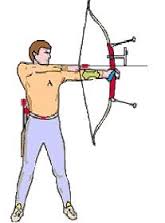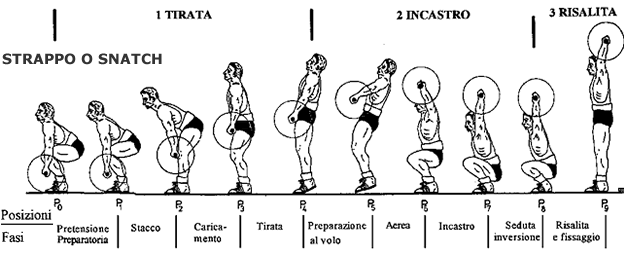To work with archery in the growth phase physical / tactical / psychological It involves the use of a methodology and a strategy coer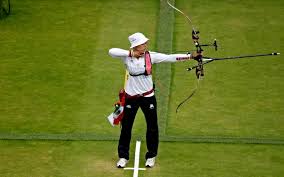 body with the principles of training Data from both the science that from consciousness and implies the will to try new paths made of means which can, sometimes, appear unconventional to the development of the technique. however I believe that initially the technique is formed by variability and motor imagination who continued to train in time door, together with other aspects, a sports mastery.
body with the principles of training Data from both the science that from consciousness and implies the will to try new paths made of means which can, sometimes, appear unconventional to the development of the technique. however I believe that initially the technique is formed by variability and motor imagination who continued to train in time door, together with other aspects, a sports mastery.
PURPOSE: what I'm going to exhibit, albeit extremely it summarized in its form and its content, is a possible of the middle variant workout that can be used with positive results in training sessions, with different finalization. The exercise was the issue Olympic called the lift “strain”, I knew who exercise in small parts of it somministravo, but which I did not have full awareness and knowledge up to some time ago.
PRACTICAL APPLICATIONS: the research done in archery and outside of it is on the field is using manuals, books, sports magazines and comparing data across, I have come to the possible year applications breakout which I will explain later.
Keyword: model prestativo – qualitative movement – practical finalization
INTRODUCTION
contrarily to what might come to mind watching a competition of archery, talk about a very articulate specialties and it is for this reason that in order to understand it better it present partially the model prestativo.
According to the classification proposed by Prof. A. from Mount (1983), the archery being a sport of skill and aims, with muscular medium-scale commitment to purpose and directional postural; in the Olympic classification is defined as a complex coordinative activities (Platonov).
In archery coexist various capacities neuromotor, citing the most relevant to the work we: 1) the force; 2) the speed or rapidity; 3) muscular endurance; 4) postural dominance; 5) cyclical movement; 6) coordination and dexterity; 7) Anaerobic gives impegno alattacido; 8) relationship between stability and performance, and between body stability and bow arm(mass distal); 9) interaction of the three postural systems for maintaining the balance (visual, vestibular and proprioceptive archaeo); 10) anxiety management and activation capabilities and interspersed mental deactivation.
The sequence shooting at an advanced archer is realized in the following points: 1) foot positioning, wide shoulders with dominant foot parallel to the target and the opposite foot open to 45 °, Basin in the target direction in the same angle of the feet; 2) incocco arrow; 3) positioning bow hand, knuckles to 45 ° with equal pressure between thumb, index and palm; 4) rope Pull; 5) visual docking target, with positioning of the head that will remain so until the end of the shot; 6) bow lifting; 7) tration rope, Start with the arm activation and subsequent transfer to the trunk muscles, with uneven towards the spine to the shoulder pace approaching; 8) berth, rope in the middle of the nose and to the right side of the chin; 9) Rope control aligned with the viewfinder; 10) look; 11) release, string fingers that they relax and are opened by string tension; 12) follow thrue, maintenance of the firing sequence by the bow arm and rope arm (The fact that the conscious realization motor pattern).
Not everyone is born archers evolved, task of those who accompany them in sports training path is get them there, and in this regard, as athletic trainer, It is a few years since I seek and apply strategies allenanti that can help athletes in competitive growth and parallel to the technicians in the path of technical development, all while trying to analyze the coherently possible dynamic and static actions, the personal characteristics of each individual athlete, the technical advice it gives me and how much more I can be useful without falling in the mode of new media allenanti (that I am not really that new).
The analysis made in the field has led me to believe that the exercise breakout can be a very useful means to use in the path of the athletic development of young archers for several reasons which I will explain later; when I talk to young archers mean age ranging from 9 years to 12 age (age at which an aspiring archer can start shooting practice).
PURPOSE
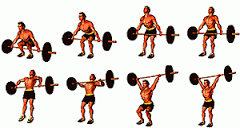 As said before, I consider the exercise of tear helpful in training the archer in several respects, some of these are: 1) It serves for the development of organic and muscular abilities mentioned in prestativo and trainable pattern according to time windows; 2) active in sequence and in their entirety myofascial lines engaged in the technical movements and develops symmetrically; 3) It develops in training learning complex coordinative skills; 4) combines the force control with the application of force same. In essence it is a means of development of organic and muscular ability and coordinative, which may contain raised inside of gear of the variants (as the water, well that are associated with those used in plastic bows) that can enrich the motor control experience and at the same time allow you to work in prevention on the weak links of the course of fire (shoulder girdle and scapulothoracic) and thus prevent any trauma data by application of the wrong forces from used casting weights, that curved over can go from initial 14lb up to 42LB, and in some cases over.
As said before, I consider the exercise of tear helpful in training the archer in several respects, some of these are: 1) It serves for the development of organic and muscular abilities mentioned in prestativo and trainable pattern according to time windows; 2) active in sequence and in their entirety myofascial lines engaged in the technical movements and develops symmetrically; 3) It develops in training learning complex coordinative skills; 4) combines the force control with the application of force same. In essence it is a means of development of organic and muscular ability and coordinative, which may contain raised inside of gear of the variants (as the water, well that are associated with those used in plastic bows) that can enrich the motor control experience and at the same time allow you to work in prevention on the weak links of the course of fire (shoulder girdle and scapulothoracic) and thus prevent any trauma data by application of the wrong forces from used casting weights, that curved over can go from initial 14lb up to 42LB, and in some cases over.
The choice between the exercise of tear and to rush It is not given by a particular sympathy for an exercise or another, but deriving from a reasoning observation of many archery both of youth sector is of senior industry and from a comparison between them and between the means used in general training phase and in the specific phase (provided that it still makes sense to speak of these phases). I believe that in a time sequence and then
simultaneously in a long-term planning, the exercise of strain both as indicated in young, for the reasons stated above and for other which I will explain below, for its use in various different sequences unit training, as a complete functional test or split into parts (segmentarie) like the squat test developed by Francesco Cuzzolin.
In a year sequence and jerk and snatch optical subdivision, the first I see the best in young people as applicable workout fondamntale character while the second takes on more special connotations for direct stimulation on the muscles involved in the shooting sequence.
ANALYSIS
The decision to use the exercise of tear arises from the following reflections and finds its application as a result of the same:
- POSTURE SHOOTING: vertical, stationary, on two supports, conduct of technical movements in axial with two fundamental movements pull and push, closed chain (lower limbs) and open chain (upper limbs), almost all of the shares takes place in the frontal plane (line bow arm and drawing arm).
1.2 DYNAMIC ACTION SHOOTING: action shooting are involved the following myofascial lines (ANATOMY
TRAINS-THOMAS W. MYERS): A- rear surface line; B- Front side line; C- deep front line (stabilization, support and balance); D- arm line, Front and rear deep and shallow; F- spiral line.
- ANALYSIS ON THE FIELD: in an analysis made of archers (22 in total) where they were used by field tests (Dry the core stability according McGill and Gambetta) to see how the tensions generated by the accounted shot of trunk, upper and lower limbs, It has been noted that action tension It manifested itself mainly on the shoulders and arms and generated postures hyperlordosis when the maintenance phase He exceeded 10” e successive compensatory posture (mainly transverse and sagittal planes)basin; the tests were administered before the shot. L’ analysis led me to think that, in addition to lack of strength, there is not the “communication” between myofascial lines and that the three main segments namely legs, core and shoulders act as three separate sectors.
I arrived exceedingly to the conclusion that the dynamic action shooting generates forces which in this case remain all’internal of the body in a sort of “closed circuit”, passing from the spiral line (torsional movements) but blocked at the core level; the weakest link of this circuit it is therefore to be: one, the transmission of forces along the same lines of movement and due, lin the lower part that does not “receives” and consequently transmits forces (in part or their entirety) the field reusing later as a backlash; Axis block coxofemoral, core, humeral bachelor.
- TEAR AND ACTION LINES myofascial:
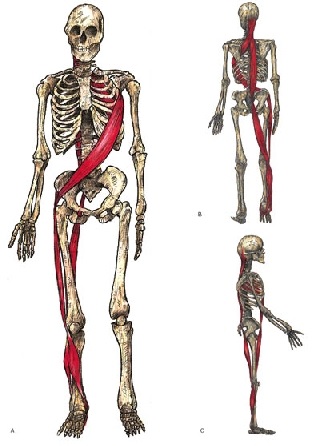
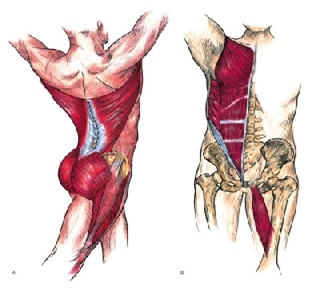 the agent action on myofascial lines or agent through them, coincides with the technical gesture; this is true for all the sequence, even if the athlete does not need the air phase, that of joint and ski, but in this context I do not classify the’exercise as a basic or special but as workout the lines and their interaction (coordinative and organic-muscle).
the agent action on myofascial lines or agent through them, coincides with the technical gesture; this is true for all the sequence, even if the athlete does not need the air phase, that of joint and ski, but in this context I do not classify the’exercise as a basic or special but as workout the lines and their interaction (coordinative and organic-muscle).
The tear allows the communication and the transmission of forces between the three axes, involving groups with core centric movement, activating foalso rtemente the spiral band ending the movement during the ascent phase with an X,coinciding with the shooting posture (stationary, vertical, axial, on two supports); trains reuse of reaction forces to the ground (action – reaction) and it develops in action at open and closed chain, allenando a transitive and intransitive movement, surrendering to a force to develop voluntary strength (Gambetta), generating a positive initial transfer not only for the technical act but for the creation of alternative motor patterns to the very action that may be useful in the process of athlete's plateau, which generally it is highlighted in a worsening of the shooting sequence; the correct sequence therefore appears to be: ground – legs – also – trunk – shoulders – arm – wrist.
- PERFORMANCE MOTOR SIMMETRICA: as seen in the model prestativo, the archery turns out to be a sport of complex coordination, However, the problem arises from the fact that it is a coordination that develops an asymmetrical movement, This is also evident from the lines of the shoulders and back muscles of the back, where we find the bow arm and the following muscles of the trunk in retreat (more adducts) on the longitudinal or slightly toned compared to contralateral arm of the rope; the approach movement towards the scapular column (movement required by the act, and that is done with a different rhythm) door to have in most cases the scapula of the flat rope arm while the shoulder blade of the bow arm slightly “unglued” or at worst both unglued.
The tear-off technique implies, differently from the action technique, an execution motor symmetrical and therefore is extremely positive for the correction of asymmetries, in preparation for the future strength training (I have noticed to be able to also restore muscle symmetries in developed athletes and adults), running that strengthens the back muscles of the trunk and improves consapevolizzazione, the so-called “feel the muscles”, strengthens the shoulder girdle and chest humeral bachelor (the weak links of the archer), It improves intra and inter muscular coordination, and it is therefore to be an exercise coincides in many aspects and factors to muscle groups engaged in shooting.
4.1 FRAGMENTATION GESTURE: in preparation for the creation of a new and complex motor pattern I think is its fragmentation; in order to understand the sequence breaks down the movement in its fundamental parts in succession and it is recomposed as a complete gesture both in classical form or enriching it with the addition of more or less complex variants.
The exercise breakout is well suited to this breakdown, Divided into 5 basic fractions: up to the dock, Shoulder, over the head, overhead squat with and finally lift; It involves attention to 5 steps in turn require more attention in their development, training training; possible its use also as a complex functional test.
- TEAR AND CORE: according Gambetta, the core must be trained in all planes of motion with stabilization exercises, flexion-extension, twist, launches and took; in this sequence workout exercise breakout becomes a means almost essential in a possible specific warm-up routine in technical session, with the stabilizing muscles of the core activation and mobilizers.
- MENTAL GESTURE: it is known that what influences positively not a performance is the state of anxiety. The extremely simplified mental images that can be generated with this exercise are: 1) victory gesture, arms in the air; 2) lifting a weight over her head (one's?); 3) to test; 4) get involved; 5) challenge a friend (improving the competitive character); 6) best acquisition of self-confidence; 7) positive reset usable in the race.
DISCUSSIONS
Most of the conclusions I have come to affirm that this motor gesture may be a new medium workout for the archery is based on my direct experience and on key aspects captured in the literature that have given support to this thesis; between the main:
- FRAGMENTATION GESTURE: the exercise programming passes for the translation of a target, the evaluation, the search for the stability and balance of the muscle, the search for adequate levels of strength and power and the integration of all movements. The fragmentation of the gesture from an operational point of view converts the fundamental movements in allenanti elements and forms the basis of any progress , mechanics, energy, coordinativa; any fundamental movement must first be supported by a pre-activation of the center (core) – (Andorlini).
- proprioceptive training: always with the archers the proprioceptive training is used to
improve stability and balance in the shooting posture, this however implies a decrease in effectiveness of the view that in the case of an archer must play a fundamental role of pointer and non-anchor to maintain the balance; in this regard the exercise breakout is well suited to training stability without affecting the visual on the apparatus but mainly on the vestibular. A study published in Science & Sport (n°31) puts at comparing the proprioceptive training with vestibular and visual systems, and the results of research indicate that in the storage and mental representation of the vertical position (static), information from afferents otolithic system are primary compared to visual and proprioceptive input; this is to indicate that, in addition to influencing the different afferent pathways of information, the static position, as often it happens with an eye toward a fixed point on unstable platform, It tends to exclude the visual system which instead takes on a strategic role in the situation and balance.
- MOSTABILITY: Gambetta and Andorlini use the term Mostability (coined by G.Gray) to identify the interaction between mobility and stability, indicating mobility as the proprioceptive ability that allows the body to move in a controlled and stable manner as the proprioceptive ability that allows you to control the strength required by the movement or the movement created by the application of force same; mobility and stability depend on the interaction of local and muscles “global”. A deficit in terms of stability may have a dysfunction of an entire myofascial line that would be compensated by movement restrictions and consequent compensation, hacking and further worsening the’ asymmetry given by the technical act.
- THEORY OF DYNAMIC SYSTEMS AND TRAINING OF COORDINATION: the theory of dynamical systems formulated by Bernstejn states that the connections between nerve afferent (sensory) and afferent (motor) take place not at the level of the central nervous system, but at the peripheral level of the spinal cord, where the central system decides the goal of action but would eventually interaction perception and action to determine exactly how this general command should be put in place; thanks to this system and the rapid adjustment of the movement due to a kind of “pre-feedback” is maximally stimulate motor learning stages, passing from the crude coordination, to that end, to that of the variable availability development (phase due to high level athletes).
PRACTICAL APPLICATIONS
The three possible applications include the following:
- Heating
- general heating – warm-up quantitativo, parameters:
| loop execution – Operating inserted as the first, intermediate and final |
| establishments number: 8/10 |
| Duration of the stations in time 15”/20” or repetitions 10/12 |
| Recovery between exercises: no |
| Recovery between rounds: 3 full′ – the recovery mode with static stretching exercises in the first recovery and dynamic stretching in the second recovery |
| Total laps: 2/3 – employees from the technical session in the main-part |
- general heating – warm-up qualitativo, parameters:
| Used as a unique exercise – motor gesture split into phases |
| Number of phases: 8 – last phase Full Motion |
| Repetitions in step: 8/10 |
| Recovery between phases: if it takes obvious fatigue |
| Number series for stages: 2 |
| Total laps: 2 |
| Recovery between sets: Complete with dynamic stretching exercises with the main emphasis on joint mobility |
| (Sequence of phases as the training offered by Salvatore Zaffina) |
- technical session
- Inserted at the beginning of the main-part
| Inserted in the first 5 Vollet and between them – full motion |
| reps: 3 |
| Micro pause between repetitions: 10” max |
| usable tools: balancer – kettlebell – water pipe |
| Objective aimed at:1) proprioceptive control of crawler bachelor-omerale2) tight operation symmetrical or asymmetrical hip joint complex, core, bachelor-omerale3) activation of stability and mobilità4) formation of dynamic engrams (synaptic conjunctions) for the administration of a new technical variant |
- Dry physical seat
- in this case the variation of the sitting composition is given the age of the athlete; example of sitting for years athletes 12:
| circuit sessions – exercise inserted centrally or at the end |
| duration of circuit: rhythmic execution and controlled number of stations: 10running time: 20” a 30” or repetitions: gives 20 a 25 recovery between stations: no recovery between circuits: no total laps: 3 |
| variant 1: same repetitions in less time variant 2: more work unit of time |
| extensive circuit: running at medium speed number of stations: gives 8 to 10esecuzione repetitions: gives 10 a 12 (tests on 18/20 maximum repetitions to determine the labor intensity) Recovery between exercises: 30” recovery between rounds: 2′ Total rounds: 3 |
| intensive circuit: velocenumero execution of stations from 8 a 10 or menoesecuzione repetitions: gives 6 a 8 (tests on 12/15 maximum repetitions to determine the labor intensity) Recovery between exercises: 2′ recovery between rounds: 2’/3′ Total rounds: gives 2 a 3 |
The three types of proposals circuit, duration, Extensive and intensive, They avail themselves of the use of overload and repetition proposals may vary depending on the trained muscle group, stress and consequent strength training, the muscle groups used in the conduct of the tear and the reinforcement of the abdominal and lower back.
CONCLUSIONS
The teachers with their knowledge teach us that there can be no conclusions but only transformations that also initiate new paths; This simple and very concise work originates from reflections made by the knowledge of who in time studied, wanted, and tried with great joy transmitted. Therefore the conclusions of this paper are the result of transformations that originate from these writings:
Vittori “sports training is a pedagogical process that is realized in the organization of physical exercise repeated in quantity and with such intensity as to produce progressively higher loads, that stimulate the physiological processes of the body super-compensation and for increasing the physical capacity, psychic, techniques and tactics athlete, in order to enhance and consolidate the performance in the race”.
Bellotti / Donati add ” pedagogy-educational complex process that is realized in the organization of physical exercise repeated in quantities, intensity, forms and degrees of difficulty such as to promote and consolidate the absorption of increasingly complex and effective skills (referring to those sports where the complex skills are predominant)”.
Bellotti “the force is a simple concept but complex at the same time. Simply because it is first of all:
It is the principle, It is a principle. Because it is a complex one. The force is a one, a nutshell, that is gathered and is said unit. It is among the principles of human motion. The motion can be understood only if it is identified in the force, its equivalent”.
Andorlini ” BODY: The body of the function is the life of relationship or in connection, with people or things. Project their own movements to themselves or to others. Moving to achieve objectives, keeping control on the equilibrium that compose it in a optimal comfort area. MOVEMENT: The motion function 1) balance the volumes of the body in opposition to gravity, 2) allow the relationship with the external forms (things or people), 3) allow gestural finalization (take, Pull, to push, etc..), 4) expand their comfort zone”
The exercise breakout applied in the right proportion workout early age, It constitutes one of the means used to develop new force capability which allows a better management of the movement using a new body in order to achieve a level of performance even in a context such as the shooting with the recurve.
REFERENCES
TOTAL ARCHERY: oxygen Lee – Sports Library
THE ARCHERY: Department of Sports Medicine, Institute of Sports Science CONI, Roma Edition Minerva Medica (article published in the volume 56 – n.1 – March 2003)
FITARCO: Training Coaches and Instructors – Manual edited by Roberto Finardi
FUNDAMENTALS OF TRAINING AND BUSINESS CONTRACT: Platonov Vladimir Nikolaevic
Calzetti & Mariucci Publishers
THE FOUNDATIONS OF SPORTS TRAINING: Antonio Bear
Calzetti & Mariucci Publishers
TRAIN MOVEMENT: Andorlini Alberto
Calzetti & Mariucci Publishers
DEVELOPMENT ATHLETIC: Vern Gambetta
Calzetti & Mariucci Publishers
ORGANIZATION SPORTS TRAINING. NEW FRONTIERS: Alessandro Donati / Pasquale Bellotti Company Stampa Sportiva Roma
CONTROL POSTURAL STATIC AND DYNAMIC single stance: the Physiotherapist 2, March April 2001 authors: Riva, Trevisson, Minoletti, Venturin, Riccio
INSTABILITY BALANCE – ADVANTAGES OR DISADVANTAGES?: Science & Sport, n° 31, July September 2016 authors: Meduri, Pileri, D'Antona
LEARNING MOTOR SKILLS: SdS, n° 109, April-June 2016 authors: Bortoli, Robazza
THE PROBLEM OF INTERACTION BETWEEN COORDINATION AND LOCATION: N. A. Berstejn (Arch. Biol. Sciences, 38, 1935)
THEORY OF TRAINING MANUAL: Dietrich Martin / Klaus Carl / Klaus Lehnertz Company Stampa Sportiva Roma
EXERCISE OF STRENGTH IN YOUNG: humble Andrea
Calzetti & Mariucci Publishers
TECHNICAL SUPPORT
Duyvejonck Rita: coach Fitarco
Sports Association ASD Prince Thomas Ier – Aosta
bertolotto Cristina: Technical Level 2 Fitarco, with specialization in youth training
Sports Association ASD Ark Arcieri Alpignano – Turin

